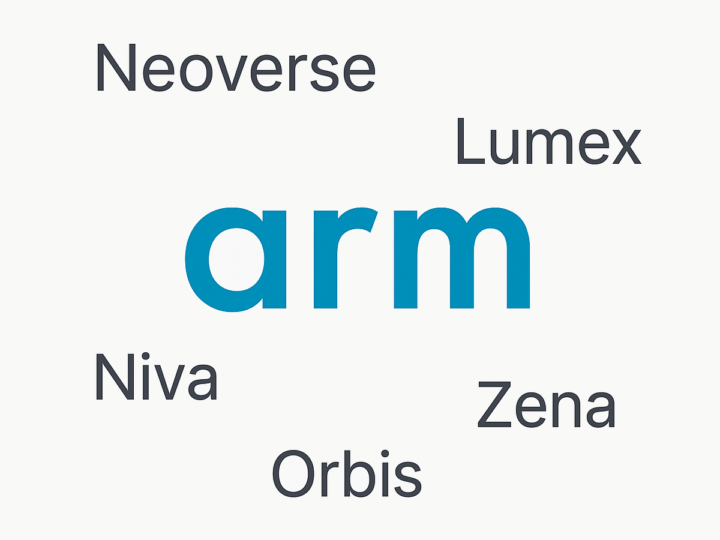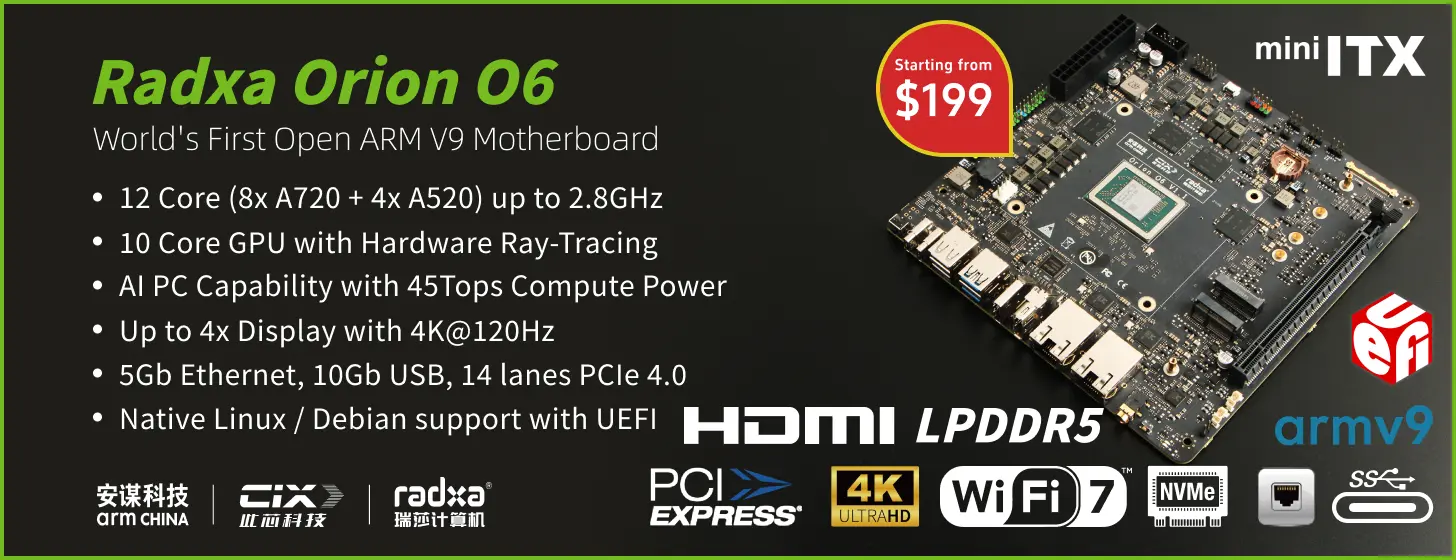We all know that Arm Cortex-A are application cores, Cortex-M microcontroller-class cores, and Cortex-R real-time cores used in various applications from IoT to automotive or architecture. But this may soon be thrown out of the window, as Rene Haas, Arm CEO, has published a short post entitled “The Arm Evolution: From IP to Platform for the AI Era” introducing a new product naming architecture with five categories:
- Arm Neoverse for infrastructure
- Arm Niva for PC
- Arm Lumex for mobile
- Arm Zena for automotive
- Arm Orbis for IoT
While it’s not explicitly stated in the post, I assume that means the Cortex naming goes away because we’re told the Mali brand will continue as the GPU brand, and the Arm Neoverse N1, based on Cortex-A76, is an example where Cortex branding is not used anymore. So I understand, they just decided to apply similar naming to all the product lines, although I haven’t seen any changes on the website yet, and a search for Lumex on the Arm website does not return anything except the announcement.
Rene further adds that the company is simplifying IP numbering by aligning it with platform generations and using names like Ultra, Premium, Pro, Nano, and Pico to show performance tiers. I haven’t seen examples yet, but if I try to come up with something myself using those guidelines, the Arm Cortex-M0+ could become an Arm Orbis Pico0+ or something similar, the Arm Cortex-A78AE might become Arm Zena Premium 78AE, and so on…
Thanks to TLS for the tip.

Jean-Luc started CNX Software in 2010 as a part-time endeavor, before quitting his job as a software engineering manager, and starting to write daily news, and reviews full time later in 2011.
Support CNX Software! Donate via cryptocurrencies, become a Patron on Patreon, or purchase goods on Amazon or Aliexpress





Note that Neoverse-N1 is not based on Cortex-X1 but on A76 (in fact I even have to find any single difference between N1 and A76 except the max number of cores and the model number 0xd0c vs 0xd0b).
I think I must have read something too fast. You’re right, it’s based on the Cortex-A76.
I’m sure the nerds like us who actually care about core types will enjoy the confusing new naming schemes.
I was ready with my pitchfork until I saw:
While I can see value in the naming like that making it easier to determine which chip to use for a given abstract need (eg. automotive), I still am raising that pitchfork because I still think the previous naming was better.
For example, with automotive, you may need
real-timechips for the driving-based systems, while control-based (things like entertainment systems in the vehicle) may go withapplicationchips.But maybe I’m missing something.
Weird, so a core can’t have more then one application in the new scheme?, this makes not much sense to me.